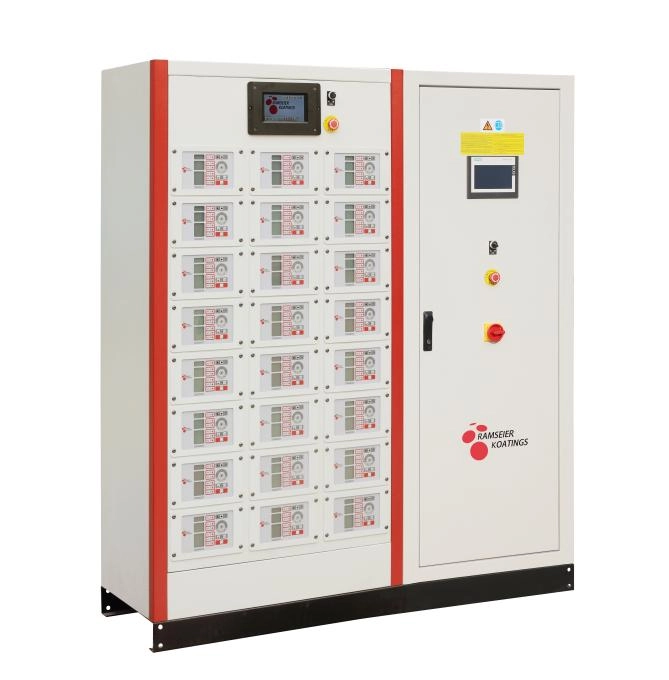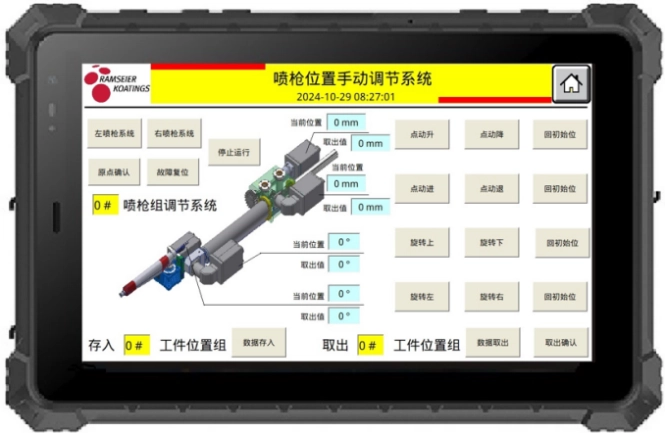Content Menu
● Understanding Integrated Control Systems
● Key Benefits of Implementing an Integrated Control System
>> Increased Productivity and Efficiency
>> Cost Reduction Through Streamlined Operations
>> Enhanced Data Accuracy and Real-Time Monitoring
>> Improved Collaboration Across Departments
>> Superior Quality Control and Customer Satisfaction
>> Scalability and Flexibility for Future Growth
>> Enhanced Safety and Risk Management
>> Better Energy Management and Sustainability
>> Increased Visibility and Control
● How Integrated Control Systems Transform Industrial Operations
>> Centralized Control Management
>> Predictive Maintenance and Reduced Downtime
>> Standardization and Simplification
● Challenges and Considerations in Implementation
● Conclusion
● Frequently Asked Questions (FAQs)
In today's fast-evolving industrial and manufacturing landscapes, the implementation of integrated control systems has become a pivotal strategy for organizations aiming to enhance operational efficiency, reduce costs, and improve safety. Integrated control systems unify various subsystems—machinery, software, human interfaces, and data management—into a cohesive platform that operates seamlessly. This article explores the top benefits of adopting such systems, detailing how they transform operations and provide competitive advantages.

Understanding Integrated Control Systems
An integrated control system combines multiple control and monitoring components into a single, harmonized system. This integration allows for centralized management, real-time data sharing, and automated control across different operational facets. Unlike isolated systems that operate independently, integrated systems enable smooth communication between subsystems, ensuring that processes are synchronized and optimized.
Key Benefits of Implementing an Integrated Control System
Increased Productivity and Efficiency
One of the most significant advantages of integrated control systems is the substantial boost in productivity. By automating repetitive and manual tasks, workers can focus on higher-value activities, leading to improved workflow and faster production cycles. The seamless coordination between machinery and software reduces downtime caused by manual interventions or misaligned processes. Real-time data access allows operators to monitor performance continuously and make timely adjustments, further enhancing operational efficiency.
Cost Reduction Through Streamlined Operations
Integrated systems help reduce operational costs by minimizing redundant processes and manual labor. Automation decreases the need for extensive human intervention, which lowers labor costs and reduces the risk of human error. Additionally, predictive maintenance capabilities embedded in integrated control systems allow for scheduling maintenance activities during off-peak hours, preventing costly unexpected breakdowns. The result is a more cost-effective operation with optimized resource utilization.
Enhanced Data Accuracy and Real-Time Monitoring
Data accuracy is critical for effective decision-making. Integrated control systems automatically collect and share data across all platforms, eliminating errors caused by manual data entry or incompatible data formats. This unified data environment enables real-time monitoring of equipment, processes, and environmental conditions. Operators gain a comprehensive view of operations, facilitating quicker identification of issues and more informed decisions.
Improved Collaboration Across Departments
With integrated control systems, data silos are broken down, enabling better collaboration between different departments such as production, maintenance, quality control, and supply chain management. Access to shared, accurate data allows teams to coordinate more effectively, solve problems faster, and optimize overall performance. This holistic approach enhances organizational agility and responsiveness to changing conditions.
Superior Quality Control and Customer Satisfaction
Integrated monitoring systems enable early detection of quality issues, allowing for prompt corrective actions before defects propagate through the production line. This proactive quality control reduces waste and rework, ensuring that products meet or exceed customer expectations. Faster production cycles combined with higher quality contribute directly to increased customer satisfaction and loyalty.
Scalability and Flexibility for Future Growth
An integrated control system provides a standardized platform that can easily accommodate new technologies and expanded production demands. Scalability is facilitated by a unified database and reusable application templates, which simplify the integration of additional equipment or processes. This flexibility ensures that the system can evolve with the business, supporting long-term growth without disruptive overhauls.
Enhanced Safety and Risk Management
Safety is a paramount concern in industrial environments. Integrated control systems improve safety by automating hazardous processes and reducing human error. Advanced safety features such as automated shutdowns, fault detection, and emergency response protocols help prevent accidents and protect personnel and equipment. Moreover, integrated systems can monitor environmental factors and operational conditions to mitigate risks proactively.
Better Energy Management and Sustainability
Modern integrated control systems often incorporate energy management capabilities. By monitoring and controlling energy consumption across various utilities—such as water, air, gas, electricity, and steam—organizations can optimize usage and reduce waste. This contributes to lower operational costs and supports corporate sustainability goals by minimizing the carbon footprint of manufacturing facilities.
Increased Visibility and Control
Real-time dashboards and advanced visualization tools provide operators with clear, high-fidelity insights into process performance. This enhanced visibility empowers the workforce to respond swiftly to anomalies, optimize operations continuously, and maintain business continuity. Better control over processes translates into reduced downtime and improved overall equipment effectiveness.
How Integrated Control Systems Transform Industrial Operations
Centralized Control Management
Centralizing control through integration allows for a unified management interface, where operators can oversee multiple subsystems simultaneously. This reduces complexity and the need to switch between different control panels or software, streamlining operations and improving response times.
Predictive Maintenance and Reduced Downtime
Integrated systems leverage real-time data and analytics to predict equipment failures before they occur. This predictive maintenance approach enables scheduling repairs proactively, reducing unplanned downtime and extending the lifespan of machinery.
Standardization and Simplification
By adopting a single integrated platform, organizations benefit from standardized hardware and software configurations. This uniformity simplifies training, maintenance, and system upgrades, reducing design time and lowering costs associated with system duplication or incompatibility.
Challenges and Considerations in Implementation
While the benefits are compelling, implementing an integrated control system requires careful planning and execution. Challenges include:
- Ensuring compatibility between legacy systems and new technologies.
- Managing the complexity of integrating diverse subsystems.
- Training staff to operate and maintain the integrated system effectively.
- Addressing cybersecurity risks associated with increased connectivity.
Engaging experienced control systems integrators can help mitigate these challenges by designing tailored solutions that align with operational goals.
Conclusion
Implementing an integrated control system offers transformative benefits for industrial and manufacturing operations. From boosting productivity and reducing costs to enhancing safety and sustainability, integration provides a strategic advantage in today's competitive environment. By centralizing control, improving data accuracy, and enabling real-time monitoring, organizations can optimize their processes, improve product quality, and respond agilely to market demands. As technology continues to evolve, integrated control systems will remain a cornerstone of efficient and resilient industrial operations.
Frequently Asked Questions (FAQs)
Q1: What industries benefit most from integrated control systems?
A1: Industries such as manufacturing, oil and gas, pharmaceuticals, food and beverage, and utilities benefit significantly due to complex processes requiring precise control and monitoring.
Q2: How does integration improve safety in industrial settings?
A2: Integration automates hazardous tasks, reduces human error, enables real-time fault detection, and implements automated safety shutdowns, thereby minimizing accident risks.
Q3: Can integrated control systems work with existing legacy equipment?
A3: Yes, with proper planning and the use of compatible interfaces or middleware, legacy systems can be integrated into modern control platforms.
Q4: What role does data play in integrated control systems?
A4: Data is central; integrated systems collect, share, and analyze data in real-time, enabling informed decision-making, predictive maintenance, and process optimization.
Q5: Are integrated control systems scalable for future expansion?
A5: Absolutely. Integrated systems are designed for scalability, allowing easy addition of new equipment and technologies without disrupting existing operations.

[1] https://quadplus.com/benefits-of-seamless-control-systems-integration/
[2] https://www.acm.org/binaries/content/assets/education/it2017_chinesetranslation.pdf
[3] https://blog.se.com/industry/2023/10/18/4-reasons-a-single-integrated-distributed-control-system-is-key-for-industrial-operations/
[4] https://jphe.amegroups.org/article/view/4265/10863
[5] https://maveneer.com/control-system-integration
[6] https://developer.mozilla.org/zh-CN/docs/MDN/Writing_guidelines/Writing_style_guide
[7] https://www.netsuite.com/portal/resource/articles/erp/benefits-system-integration.shtml
[8] http://www.tup.tsinghua.edu.cn/upload/books/yz/085177-01.pdf
Hot Tags: China, Global, OEM, private label, manufacturers, factory, suppliers, manufacturing company










































 .
. 